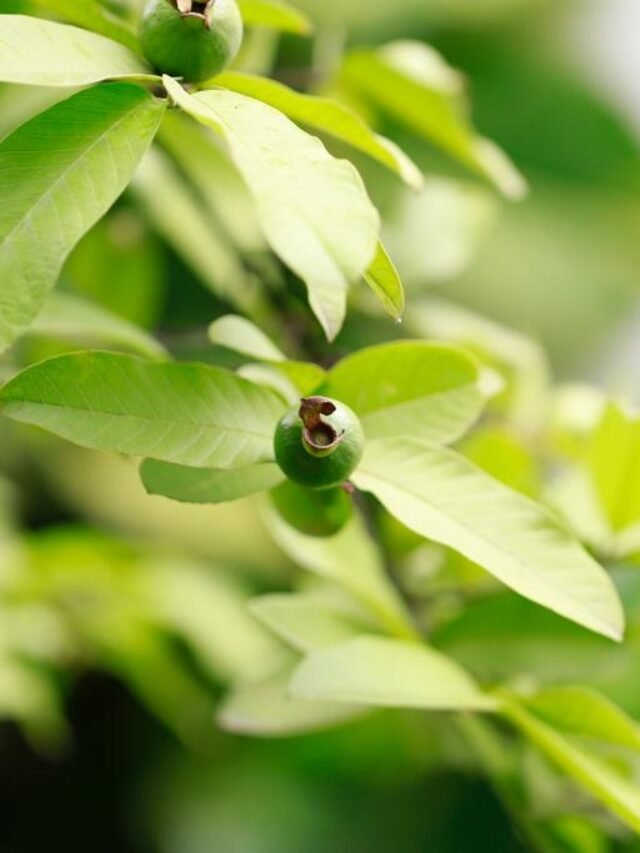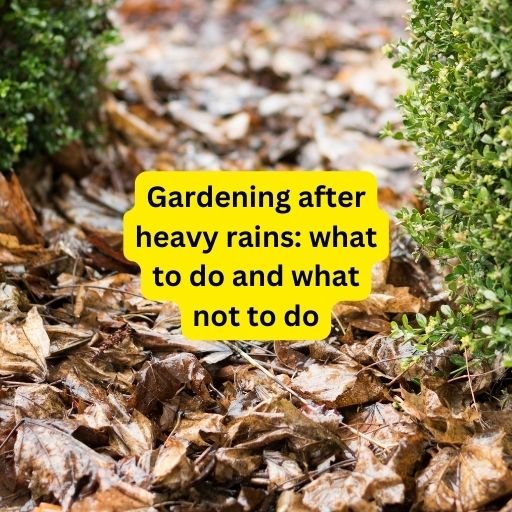Search Below For New Gardening Tips and Tricks with Practicals
Understanding the Causes of Brown Leaves
Leaves turning brown is a common issue faced by many plant enthusiasts, particularly during a heatwave. Understanding the underlying causes can help in addressing the problem effectively. One of the primary reasons for browning leaves is dehydration. Plants lose water rapidly in high temperatures, leading to a lack of moisture. Dehydration can be identified by dry, crispy edges on the leaves.
Another significant factor is sunburn. Prolonged exposure to intense sunlight can cause leaf burn, characterized by brown spots or patches on the leaves. This condition is particularly prevalent during heatwaves when the sun’s rays are most potent. To prevent sunburn, it is crucial to provide some shade or move potted plants to a less exposed area during peak sunlight hours.
Nutrient deficiencies also contribute to the browning of leaves. A lack of essential nutrients like potassium, magnesium, or nitrogen can manifest in various symptoms, including brown or yellowing leaves. For instance, a nitrogen deficiency may cause older leaves to turn yellow and brown at the edges, while a potassium deficiency often results in brown leaf tips and margins. Regularly fertilizing and ensuring balanced soil nutrients can mitigate this issue.
Pest infestations are another common reason for leaves turning brown. Insects such as aphids, spider mites, and scale insects feed on the plant’s sap, leading to tissue damage and discoloration. The presence of these pests can be identified by inspecting the undersides of the leaves and looking for tiny moving dots or webbing. Prompt treatment with appropriate insecticides or natural remedies can help control pest populations and prevent further damage.
By carefully examining the appearance and symptoms of your plant’s leaves, you can better diagnose the cause of browning and take the necessary steps to revive your plants. Understanding these common factors can help in maintaining healthy, vibrant foliage even during challenging weather conditions.
Proper Watering Techniques for Heatwaves
When leaves are turning brown, it’s often an indication that your plants are struggling to cope with the scorching heat. One of the most critical factors in maintaining plant health during a heatwave is proper watering. The key is to ensure that your plants receive sufficient hydration without overwatering, which can be just as detrimental.
Deep watering is essential in hot weather. This technique involves watering the soil to a depth of at least 6 to 8 inches, encouraging roots to grow deeper and become more resilient to heat stress. Shallow watering, on the other hand, can lead to weak root systems that are more vulnerable to high temperatures. To achieve deep watering, water slowly and thoroughly, allowing the moisture to penetrate deeply into the soil.
The timing of watering also plays a crucial role. The best times to water your plants are early in the morning or late in the evening. Watering during these cooler parts of the day reduces evaporation and ensures that more water reaches the root zone. Avoid watering during the peak heat of the day, as much of the water will evaporate before it can benefit the plant, and the sudden temperature change can shock the plant.
Common watering mistakes include overwatering, which can lead to root rot, and underwatering, which can exacerbate leaf browning. To avoid these pitfalls, monitor the soil moisture regularly. A simple way to check is by inserting your finger into the soil up to the second knuckle; if it feels dry, it’s time to water.
Using mulch is an effective strategy to retain soil moisture and protect roots from overheating. Apply a layer of organic mulch, such as straw, wood chips, or compost, around the base of your plants. This not only helps to keep the soil cool and moist but also reduces water runoff and erosion.
By implementing these proper watering techniques, you can significantly improve your plant’s chances of surviving and thriving during a heatwave, preventing those dreaded leaves from turning brown.
Creating Shade for Your Plants
The intense heat of a scorching heatwave can cause significant stress to your plants, often leading to leaves turning brown. One of the most effective ways to mitigate this issue is by creating shade to reduce their direct exposure to the sun. Employing shade cloths is a practical solution. These specially designed fabrics can be draped over plants or mounted on frames to provide varying degrees of shade, depending on the density of the cloth. Shade cloths are versatile and can be easily adjusted or removed according to the changing weather conditions, ensuring your plants receive the optimal amount of sunlight.
Garden umbrellas are another excellent option for creating temporary shade. They can be strategically placed to shield your plants during the peak sun hours, and moved as necessary to accommodate the sun’s movement. This flexibility allows you to protect different parts of your garden throughout the day, preventing leaves from turning brown due to excessive heat and sunlight.
Strategic placement of taller plants or structures can also help in providing natural shade. Tall plants, trellises, or even garden walls can cast shadows over more vulnerable, smaller plants. This method not only protects the plants from direct sun exposure but also integrates seamlessly into the garden’s landscape. However, it is crucial to balance light and shade appropriately. While shielding plants from the harsh midday sun is beneficial, they still need adequate sunlight for photosynthesis. Ensuring that plants receive morning or late afternoon sunlight can help them maintain healthy growth without the risk of overheating.
By implementing these shading techniques, you can create a more hospitable environment for your plants, reducing the likelihood of their leaves turning brown. These methods not only protect your plants from the immediate effects of a heatwave but also promote long-term resilience and vitality in your garden.
Soil Management and Mulching
During a heatwave, maintaining healthy soil is paramount to preventing leaves turning brown and ensuring your plants thrive. One of the primary strategies in soil management is enhancing the soil’s water retention capabilities. Incorporating organic compost into the soil can significantly improve its structure, allowing it to hold moisture more effectively. Organic compost, rich in nutrients, not only enhances water retention but also promotes robust root health, which is crucial during extreme temperatures.
Another beneficial soil amendment is vermiculite. This mineral helps to aerate the soil and increase its moisture-holding capacity. Vermiculite acts like a sponge, soaking up water and slowly releasing it to the plant roots. This steady supply of moisture can be vital during prolonged periods of intense heat, reducing the risk of leaves turning brown due to dehydration.
Mulching is another critical practice in soil management. Applying mulch around your plants serves multiple purposes: it helps to retain soil moisture, keep the soil cool, and suppress weed growth. Various types of mulch, such as straw, wood chips, and shredded leaves, can be used effectively. To properly apply mulch, spread a layer of about 2-4 inches thick around the base of your plants, ensuring it does not directly touch the stems to prevent rot.
Organic mulches, like straw or shredded leaves, gradually decompose, adding valuable organic matter to the soil. This not only improves soil fertility but also enhances its ability to retain moisture. Inorganic mulches, such as gravel or landscape fabric, are also effective in preventing water evaporation and maintaining lower soil temperatures. Both types of mulch play a crucial role in protecting the soil and plants during a heatwave, preventing the browning of leaves by ensuring consistent moisture and cooler root environments.
By focusing on soil management and proper mulching techniques, gardeners can create a resilient environment for their plants, mitigating the adverse effects of heatwaves and preventing the dreaded sight of leaves turning brown.
Choosing Heat-Resistant Plant Varieties
When contending with the challenge of leaves turning brown in the face of a scorching heatwave, selecting the right plant varieties can make a substantial difference. Opting for heat-resistant plant species ensures that your garden not only survives but thrives during high temperatures. Numerous plants have evolved to withstand such conditions, making them ideal candidates for your garden in hot climates.
Among the most resilient varieties are succulents like Aloe Vera and Agave, which can store water and endure prolonged periods of drought. Lantana is another heat-tolerant option, known for its vibrant blooms and ability to attract pollinators. For those seeking foliage plants, Dusty Miller and Yarrow are both excellent choices, as they maintain their structure and color even under intense sun exposure.
For vegetable gardens, consider varieties such as Okra, Sweet Potatoes, and Hot Peppers, which are well-suited to high-heat environments. Additionally, herbs like Rosemary and Thyme thrive in hot conditions and can be seamlessly integrated into your garden layout.
Incorporating heat-resistant plants into your garden requires a thoughtful approach. Begin by assessing your local climate to identify the specific challenges your garden may face during a heatwave. Select plants that are native to or have adapted to similar climates, as they are more likely to flourish. Furthermore, consider planting in groups based on their water and sunlight needs, creating microenvironments that can help mitigate the impact of intense heat.
By strategically choosing heat-resistant plant varieties and tailoring your garden to suit your local climate, you can effectively combat the issue of leaves turning brown. This proactive approach not only preserves the aesthetic appeal of your garden but also contributes to its overall health and sustainability during periods of extreme heat.
Maintaining Plant Health with Nutrients
In the face of a heatwave, maintaining the nutrient balance of your plants is crucial to prevent leaves turning brown. Essential nutrients play a pivotal role in enhancing a plant’s resilience to heat stress, with potassium and magnesium being particularly significant. Potassium aids in regulating water uptake and maintaining cellular functions under stress, while magnesium is vital for chlorophyll production, which is necessary for photosynthesis. These nutrients collectively ensure that plants can sustain their growth and maintain green, healthy foliage even in extreme conditions.
When it comes to providing these essential nutrients, the use of fertilizers and soil conditioners can be highly effective. Opt for fertilizers that have a balanced mix of nitrogen, phosphorus, and potassium (N-P-K) to support overall plant health. During a heatwave, it is especially beneficial to use formulations with higher potassium content to bolster the plant’s drought tolerance. Additionally, incorporating magnesium-rich fertilizers or soil amendments can help in mitigating the effects of heat stress.
Soil conditioners such as compost and organic matter can improve soil structure and enhance nutrient availability. These conditioners help in retaining soil moisture, which is critical during periods of intense heat. By maintaining an optimal level of soil moisture, plants are better equipped to absorb nutrients efficiently, thus reducing the likelihood of leaves turning brown.
It is also important to monitor the soil pH, as nutrient uptake is highly dependent on the pH level. Most plants thrive in slightly acidic to neutral pH levels (6.0-7.0). Regularly testing the soil and adjusting its pH with lime or sulfur can optimize nutrient absorption and enhance the plant’s ability to withstand heat stress.
Incorporating these practices into your plant care routine can significantly improve their resilience during a heatwave, ensuring they remain healthy and vibrant. Providing the right nutrients not only helps in preventing leaves from turning brown but also promotes overall plant vigor and longevity.
Pest and Disease Management in Hot Weather
Heatwaves significantly exacerbate pest and disease problems in plants. The high temperatures and increased humidity create an ideal environment for pests and pathogens to thrive. When leaves start turning brown, it is often a sign that your plant is under stress, making it more susceptible to infestations and infections.
Effective monitoring is the first step in pest and disease management during hot weather. Regularly inspect your plants for signs of common pests such as aphids, spider mites, and whiteflies. These pests tend to multiply rapidly in warm conditions and can cause considerable damage if left unchecked. Look for telltale signs like sticky residue, webbing, or tiny insects on the undersides of leaves. Additionally, keep an eye out for any unusual spots, discoloration, or wilting, which may indicate the presence of diseases like powdery mildew or bacterial blight.
For natural pest control, consider introducing beneficial insects such as ladybugs and predatory mites, which feed on harmful pests. Neem oil is another effective organic treatment that can be sprayed on affected plants to deter pests and prevent further infestations. In cases where natural methods are insufficient, chemical treatments may be necessary. Select pesticides that are appropriate for the specific pest and follow the manufacturer’s instructions to ensure safe application.
Preventive measures are also crucial in maintaining plant health during heatwaves. Ensure proper spacing between plants to improve air circulation, reducing the likelihood of fungal infections. Mulching can help retain soil moisture and keep roots cool, which indirectly reduces plant stress and vulnerability to pests and diseases. Watering at the base of plants rather than overhead minimizes the risk of waterborne diseases.
By implementing these strategies, you can effectively manage pests and diseases, safeguarding your plants during scorching heatwaves. Remember, early detection and prompt action are key to preventing leaves from turning brown and maintaining the overall health of your garden.
Long-Term Strategies for Heatwave Preparedness
Gardening in the face of increasing heatwaves demands not just immediate remedies but also long-term strategies to ensure the health and resilience of your plants. One critical approach is incorporating drought-tolerant landscaping. Opting for plants that naturally thrive in dry, hot conditions can significantly reduce the stress on your garden during extreme temperatures. Examples include succulents, lavender, and ornamental grasses, which not only withstand heat but also add aesthetic value to your garden.
Creating microclimates within your garden is another effective strategy. Microclimates can be achieved by strategically planting trees and shrubs that provide shade and windbreaks, thereby reducing the ambient temperature around more vulnerable plants. Additionally, incorporating elements like mulch and ground covers can help retain soil moisture and moderate soil temperature, further protecting plant roots from heat stress.
Sustainable watering practices are paramount for long-term heatwave preparedness. Implementing drip irrigation systems ensures that water is delivered directly to the roots, minimizing evaporation and maximizing efficiency. Mulching, as mentioned earlier, plays a dual role here by conserving soil moisture and reducing the need for frequent watering. Moreover, scheduling watering sessions during the cooler parts of the day, such as early morning or late evening, can prevent rapid evaporation and ensure that plants receive adequate hydration.
Ongoing plant care and monitoring are indispensable in maintaining long-term garden health. Regularly inspecting plants for signs of stress, such as leaves turning brown, allows for timely interventions. Employing organic fertilizers can boost plant resilience, while periodic pruning helps in maintaining plant vigor and structure. Keeping an eye on weather forecasts and adjusting care routines accordingly can also mitigate the adverse effects of heatwaves.
By adopting these proactive measures, gardeners can create a robust and resilient landscape that not only withstands heatwaves but also thrives in the face of climatic challenges. These long-term strategies ensure that your garden remains a flourishing sanctuary, even during the most scorching heat.
Discover more from Gardening with Ecorganicas-Source for Organic Gardening Tips
Subscribe to get the latest posts sent to your email.








